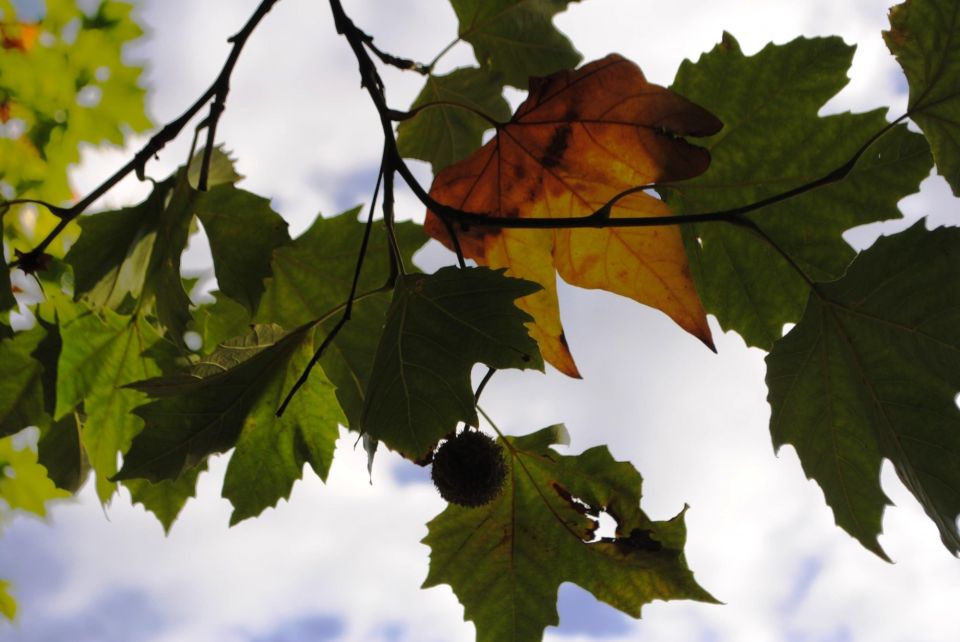How one tree can transform urban mental health

Is the urban rat race leaving you feeling stressed and burnt out? Are you making the most of the healing effect of trees and green spaces on mental health?
Anxiety and other mental health problems can be a common occurrence these days, especially in built up areas. With almost 80% of us now living in urban communities, and fewer households enjoying their own green spaces, our time among the trees is declining.
Living stressful and fast paced lives, we can all benefit from the healing power of trees. More and more research is highlighting the restorative properties of spending time in nature on our mental health. Some quality time in a green space could help you too.
Steve from Nottingham is one of many who finds peace and down-time in his local parks.
80%
nearly 80% of us live in urban spaces, so we're spending less enjoying nature
Steve, who is on the autism spectrum, says he has a special place that he visits when he is in need “of refreshment.” A picturesque weeping willow stands by the banks of the lake in Newstead Abbey gardens, near Nottingham. When Steve was a child and growing up on an urban estate this was the nearest green space to play in. He finds the beauty of this particular weeping willow helps him recover from the anxieties of urban life. The ornamental gardens not only provide a beautiful green space to relax in but also a way to connect with happy childhood memories. Now an adult, with a full life and a demanding job, Steve continues to find wellbeing with his old friend the weeping willow by the lake.
Trees help us breathe in a city and it’s particularly important when you’re surrounded by grey concrete. You need greenery to cheer you up. It’s not just good for the environment but good for the soul.
Steve can feel quite agoraphobic and being able to visit some green space is an important way to help cope with the anxiety of day to day life. His long term connection with the weeping willow provides a rich context for this and allows him to relax and recharge. It connects him to happy times and grounds his present in a calm healing environment. This has a strong positive impact on his mental health. He wishes that people
wouldn’t take trees and green spaces for granted and invested more time in using them
Anecdotal stories like Steven’s are backed up by research on the benefits of spending time in green spaces. Doctors prescribe fewer antidepressants in urban areas with more trees on the street and a large number of studies showed that nature fosters recovery from mental fatigue and that it has a restorative function.
Stress is now the biggest reason for absence from work according to the Health and Safety Executive. Research published in the Environmental Health and Preventative Medicine journal has shown that being in nature, specifically in forests, reduces the cortisol levels in our brain (our stress hormone) and can reduce symptoms of anxiety and depression.
In 2016, we worked with Maudsley Hospital, in South London to design a project that put this research into practice, aiming to give their service users the chance to benefit from spending time in nature and green spaces. We created a sensory therapeutic garden for two wards.
Collaborating with staff, we helped them to create a calming space to help patients alleviate feelings of anxiety and promote well being. Surroundings can have a big impact on well-being and recovery. Interacting with nature and spending time in a safe and tranquil place away from a ward can bring physical and mental health benefits. There are raised beds abundant with fruit and vegetables, while climbing thornless blackberries and hydrangeas provide privacy. A seating area offers a space to rest and socialise.
Hannah Oakenfold, a Ward Manager at the Maudsley Hospital, was delighted at the positive response she received and noted that staff and patients were getting involved in cultivating their edible garden:
For both ward teams this has been a really exciting opportunity to offer patients somewhere outside of the ward where they can relax, get some fresh air, play games and also learn new skills that they can take with them when they leave.
We are now starting to understand some of the many complex benefits trees can provide to us in our modern lives. Of course, the idea that spending time in nature is good for us is nothing new. Most of human history has involved us being closer to nature, and some could argue it is what our bodies are adapted to. In the past there’s often been an innate understanding of the importance and benefits of trees. They’ve been venerated and been the muse of poets and painters. It’s something we may have lost touch with in our busy urban societies.
Forest bathing or Shinrin-Yoku a concept from Japan is gaining ground in the West. The simple idea that spending time opening our senses to nature has concrete health benefits. Japanese researchers have been finding in the past twenty years that forest bathing has a direct effect on physiological health. This includes improved mood, lower blood pressure, reduced stress and improved sleep. Whilst even being in the vicinity of green spaces has been found to be of benefit , to get the most out of it you might want to try the forest bathing approach. Read our beginners guide.
So get out there and explore your local green spaces, (look out for an interesting tree) strike up a connection with a tree that captures your imagination. Even 5 minutes could help nourish and support your mental health.
Donate to Trees for Cities and together we can help cities grow into greener, cleaner and healthier places for people to live and work worldwide.
Donate